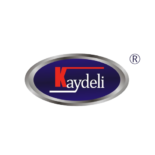Choosing between chillers and cooling towers confuses many facility managers. Selecting the wrong system wastes money and compromises performance. Understanding their fundamental differences is crucial.
Chillers and cooling towers serve different but complementary functions in cooling systems. Chillers cool water or other fluids for cooling buildings or equipment, while cooling towers cool the water that has absorbed heat from the chillers. In HVAC systems, they often work together, with chillers handling the central cooling and cooling towers managing heat rejection.
You’re not alone if you’ve been trying to decide between these cooling technologies. I’ve helped hundreds of clients understand how these systems work together. Many people think they need to choose one or the other, but in many cases, these systems complement each other. Let me explain how they work and when you might need each.
How Do Chillers Work in Commercial Cooling Systems?
Inadequate cooling in commercial buildings leads to equipment damage and discomfort. Many facilities struggle with efficiency. Understanding chiller operation is the first step toward optimization.
Chillers work by removing heat from liquid through a refrigeration cycle. The process begins in the evaporator, where the Refrigerant absorbs heat from water, typically cooling it to around 6°C (42.8°F). This chilled water then circulates through the building via air handling units to cool occupied spaces, returning at about 12°C (53.6°F) to restart the cycle.
Let me explain chillers in more depth, as I’ve worked with these systems for years and seen how crucial proper selection is for operational efficiency.
Types of Chillers and Their Applications
Chillers come in several configurations, each designed for specific use cases:
-
- Reject heat directly to the surrounding air using fans that blow over the condenser coils
- Requires no cooling tower or condenser water system
- Ideal for locations with space constraints or water restrictions
- Generally easier to install and maintain
- Lower initial cost, typically ranging from $188,000–$250,000
- Less energy-efficient, especially in hot climates
-
- Use water to remove heat from the condenser
- Typically more energy-efficient than air-cooled models
- Require connection to cooling towers3 for heat rejection
- Higher initial cost, ranging from $50,000–$200,000, plus cooling tower costs
- Better suited for larger applications where long-term efficiency is paramount
-
Absorption Chillers
- Operate using heat rather than mechanical compression
- Can utilize waste heat from industrial processes
- Lower electricity consumption but less efficient overall
- Useful in cogeneration plants or where excess heat is available
A chiller’s heart is its refrigeration cycle. Most commercial units use vapor compression, which involves four key components:
The Four Stages of the Refrigeration Cycle
| Component | Function | Process |
|---|---|---|
| Evaporator | Removes heat from liquid | Refrigerant absorbs heat from water (entering at ~12°C/53.6°F, leaving at ~6°C/42.8°F) and evaporates |
| Compressor | Pressurizes refrigerant vapor | Temperature and pressure increase |
| Condenser | Rejects heat | Refrigerant condenses back to a liquid state, transferring heat to air or water |
| Expansion Device | Reduces refrigerant pressure | Temperature and pressure decrease before returning to evaporator |
From my experience working with various industries, I’ve found that chillers are especially valuable for:
- Data centers requiring precise temperature control
- Manufacturing processes that need consistent cooling
- Medical facilities with strict environmental requirements
- Commercial buildings where space conditioning is essential
The efficiency of a chiller is measured by its Coefficient of Performance (COP) or Energy Efficiency Ratio (EER). When helping clients select the right unit, I always emphasize looking at these metrics under partial load conditions, as most chillers rarely operate at full capacity.
One common misconception I encounter is that bigger is always better. In reality, an oversized chiller will cycle on and off too frequently, reducing efficiency and shortening equipment life. Proper sizing based on actual cooling load calculations is critical for optimal performance.
What Functions Do Cooling Towers Serve in HVAC Applications?
Heat buildup damages equipment and wastes energy. Traditional cooling methods often fall short in large-scale applications. Cooling towers provide an efficient solution for heat rejection.
Cooling towers function by cooling the condenser water in water-cooled chiller systems. They receive warm water (typically at 32°C/89.6°F) from the chiller’s condenser, cool it through evaporation, and return it at a lower temperature (typically 27°C/80.6°F). This process maintains chiller efficiency by ensuring condenser temperatures stay optimal.
Having helped design cooling solutions for various industrial applications, I can tell you that cooling towers3 are fascinating pieces of engineering that often go unnoticed despite their crucial role in supporting chiller efficiency.
Cooling Tower Designs and Operating Principles
Cooling towers operate on a simple yet effective principle: evaporative cooling. When water evaporates, it absorbs heat, cooling the remaining water. This natural process is harnessed in several designs:
Natural Draft Towers
These massive, hyperboloid structures rely on temperature differentials to create natural airflow. Warm air rises through the tower, drawing in cooler air at the base. While they require no fans (reducing energy consumption), they’re enormous and usually only practical for power plants and extensive industrial facilities.
Mechanical Draft Towers
These more common towers use fans to force or induce air movement:
-
Forced Draft
- Fans located at the air inlet
- Push air through the tower
- Lower power requirements but potential for hot air recirculation
-
Induced Draft
- Fans located at the air discharge
- Pull air through the tower
- Better distribution of air, but higher power needs
-
Crossflow Design
- Air flows horizontally across falling water
- Easier maintenance access
- Lower pumping head requirements
-
Counterflow Design
- Air flows vertically against falling water
- More efficient heat transfer
- Smaller footprint for the same cooling capacity
Performance Factors and Efficiency Considerations
From my experience optimizing cooling systems, several factors impact cooling tower performance:
| Factor | Impact | Optimization Approach |
|---|---|---|
| Wet Bulb Temperature | Sets theoretical cooling limit | Location-specific design calculations |
| Water Flow Rate | Affects heat transfer efficiency | Proper pump sizing and variable flow controls |
| Air Flow Rate | Determines cooling capacity | Fan selection and variable speed drives |
| Fill Media | Surface area for water-air contact | Selection based on water quality and application |
| Drift Eliminators | Reduces water loss | Modern designs minimize environmental impact |
Water treatment for cooling towers3 deserves special attention, as many systems suffer from improper maintenance. Effective treatment programs must address:
- Scale formation that reduces heat transfer
- Corrosion that damages system components
- Biological growth that affects health and efficiency
- Fouling that restricts water flow
My clients are surprised that cooling towers can consume significant amounts of water through evaporation, drift, and blowdown. Modern sustainable designs incorporate water conservation measures like:
- Conductivity controllers that optimize blowdown
- Side-stream filtration to maintain water quality
- Alternative water sources (reclaimed water, rainwater harvesting)
- Hybrid towers that reduce evaporation during cooler weather
Which System Is Right for Your Industrial Cooling Needs?
Selecting inappropriate cooling equipment leads to excessive costs and inadequate performance. Many clients struggle with this decision. Understanding application requirements is key to making the right choice.
The right cooling system depends on your specific requirements. Choose a chiller when you need precise temperature control for process cooling or air conditioning. Water-cooled chillers with cooling towers typically offer higher efficiency for extensive facilities despite higher upfront costs. Air-cooled chillers make more sense for smaller applications or where water is scarce.
In my years helping clients select cooling systems, I’ve developed a systematic approach to determine whether an air-cooled chiller, a water-cooled chiller with a cooling tower, or a hybrid system makes the most sense for specific applications.
Key Decision Factors for System Selection
Temperature Requirements
One of the first questions I ask clients is about their required temperature range:
| Temperature Need | Typical Solution | Rationale |
|---|---|---|
| Precise control below 50°F (10°C) | Chiller system | Cooling towers cannot achieve low temperatures consistently |
| Moderate cooling (50-85°F/10-29°C) | Either system depending on other factors | Both can operate in this range with different efficiency profiles |
| Heat rejection only | Cooling tower | More economical when precision cooling isn’t needed |
| Wide temperature variations | Hybrid systems | Flexibility to handle seasonal and process changes |
Space and Location Considerations
The physical environment often constrains your options:
- Indoor Installation: Air-cooled chillers require sufficient ventilation, while water-cooled systems need less space but require cooling tower connections.
- Outdoor Constraints: Cooling towers need adequate clearance to prevent recirculation of humid air, while chillers require proper airflow around condenser coils.
- Noise Restrictions: Air-cooled chillers generally produce more noise due to fans, while water-cooled systems with towers can be quieter, making them better for urban settings.
- Climate Factors: Water-cooled chillers maintain efficiency better in hot climates, while air-cooled systems see performance decline as ambient temperatures rise.
Water and Energy Resources
Resource availability significantly impacts system selection:
-
Water Considerations
- Regions with water scarcity may favor air-cooled chillers4
- Water quality affects maintenance requirements for cooling towers5
- Water treatment costs must be factored into total ownership expenses
- Regulatory requirements for blowdown water disposal vary by location
-
Energy Profile
- Water-cooled chillers with towers generally offer better efficiency in larger systems
- Air-cooled chillers eliminate water costs but consume more electricity
- Variable load profiles may favor different systems at different times
- Available energy sources (electricity costs, waste heat, etc.) influence optimal choices
-
Cost Comparison
- Air-cooled chillers: Lower initial cost ($188,000–$250,000), higher operating costs
- Water-cooled chillers: Higher initial cost ($50,000–$200,000 plus tower), lower operating costs
- Maintenance costs are higher for water-cooled systems due to water treatment needs
- Long-term ROI often favors water-cooled systems for large applications
Combined Systems: When Integration Makes Sense
In many industrial applications I’ve worked with, the optimal solution is often a combined approach:
- Free Cooling Options: Some systems use cooling towers5 for "free cooling" during cooler months, bypassing chillers and saving significant energy
- Waterside Economizers: These systems use tower water directly in heat exchangers when conditions permit
- Chiller Heat Recovery: Advanced systems can capture rejected heat from chillers for other processes
- StagCoolinging: Using towers for initial cooling and chillers for final precise temperature control
From my experience, the most common mistake is oversimplifying the decision to an either/or choice. The reality is that chillers and cooling towers5 serve complementary functions in many sophisticated cooling systems. A water-cooled chiller connected to a cooling tower often provides the most energy-efficient solution for large-scale cooling. At the same time, standalone air-cooled chillers4 might better serve smaller applications.
Conclusion
Chillers cool water for building systems, while cooling towers5 cool the water used by chillers. They often work together, with chillers providing pre-cooling and cooling towers5 handling heat rejection. Your specific needs will determine the right combination for optimal efficiency and performance.
-
Learn about the benefits of Air-Cooled Chillers, especially for space-constrained environments, and their cost-effectiveness. ↩
-
Discover how Water-Cooled Chillers can significantly enhance energy efficiency, making them ideal for larger applications. ↩
-
Explore how cooling towers enhance efficiency and performance in HVAC systems, crucial for effective heat rejection. ↩ ↩ ↩
-
Explore the benefits of air-cooled chillers, including cost-effectiveness and efficiency in various applications. ↩ ↩
-
Discover how cooling towers can enhance energy efficiency and reduce operational costs in cooling systems. ↩ ↩ ↩ ↩ ↩





